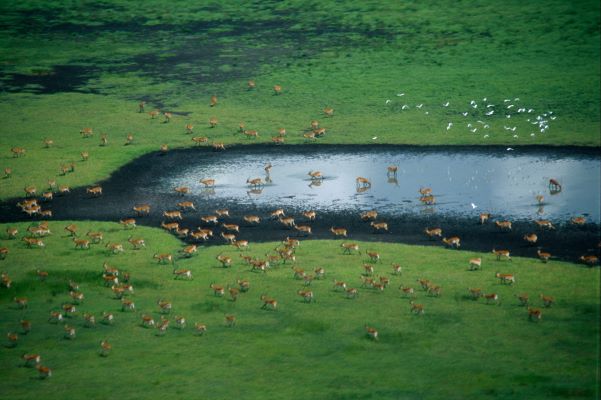Efforts to protect and save wetlands and other water bodies in Zambia have received a fillip after Worldwide Fund for Nature (WWF) and Copperbelt University agreed to collaborate and improve the environment stewardship of the Kafue River.
Under a € 550,000 partnership, there are plans to set up a research and training institute on the banks of the river and strengthen the delivery of the shared resource while envisioning providing consultancy collaboration through a mutual understanding and fostering cooperation and promotion of sustainability and an exchange facility.
The two parties, under the partnership will strive to work together towards fundraising for operationalization of the research institute as a platform and help promote delivery of the shared space.
WWF, the 61-year-old international non-governmental organization, working in the field of wilderness preservation and the reduction of human impact on the environment will be expected to perform multiple roles to make the conservation tenable.
Under the agreement, the WWF will strived to collaborate to improve the institutional water governance of the Kafue River catchment through research and policy engagement support as well as governance, among other roles of the two parties.
Speaking during the signing, WWF-Zambia country representative Nachilala Nkombo noted the multiple threats buffeting the lifeline of Kafue River and called for enhanced research on how the catchment can be managed.
CBU Centre of Excellence for Sustainable Mining leader, Mwansa Chabala regretted the lack of updates on the effects occurring at the Kafue River which threaten its existence resulting in degradation.
Despite the various economic benefits derived from the catchment including improving people’s livelihood, little is being done to save the resource. CBU Acting Vice Chancellor, Professor Paul Chisale noted with awe the unprecedented pollution of the Kafue River catchment from mining activities and other pollutants and called for increased preservation.
The mining activities in the country have in recent years led in pollution through effluents discharges into Kafue River-chiefly from Chililabombwe, one of the leading copper mining towns to where it forms a tributary of the Zambezi River.
Background: Kafue River is one of the catchment and water body areas in the country under threat from climatic change effects and needs protection to help mitigate and adapt to climate change. It embraces the Kafue Flats (locally called Butwa).
It is a vast area of swamp, open lagoon and seasonally inundated flood-plain on the Kafue River in the Southern, Central and Lusaka provinces in Zambia. They are a shallow flood plain-
240 km long and about 50 km wide, flooded to a depth of less than a meter in the rainy season (deeper in some lagoons and permanently swampy areas), and drying out to a clayey black soil in the dry season.
The Kafue Flats stretch for approximately 240 km east to west along the Kafue River Kafue River from below the Itezhi-Tezhi gap, site of the Itezhi-Tezhi Dam, to Kafue Town Itand the start of the Kafue Gorge, according to data.
At their widest point they are 50 km wide and their total area is around 6,500 sq km. The elevation of the Kafue River falls 40 m along the flats from 1030 m at Itezhi-Tezhi to 990 m at Kafue town.
Arguably, wetlands provide water, food and livelihoods to over 1 billion people. They protect against floods, droughts and storms. They help us mitigate and adapt to climate change. They serve as a key habitat for 40% of species.
Threats to Wetlands
In spite of their invaluable benefits, wetlands in Zambia are facing many threats. Land conversion for large-scale agriculture, urbanization, water infrastructure development, over-abstraction, invasive species, unsustainable fishing practices, mining, pollution (pesticide discharges and industrial waste) and climate change are just some of these threats.
Unfortunately, not much has happened beyond the designation as wetlands of international importance. None of the 8 wetlands have a management plan – one of the key requirements under the Ramsar Convention.
Despite their outstanding ecological, social and economic values, Zambia’s wetlands suffer from uncontrolled, unsustainable and destructive utilisation patterns which in the long term threaten their ecological integrity.








